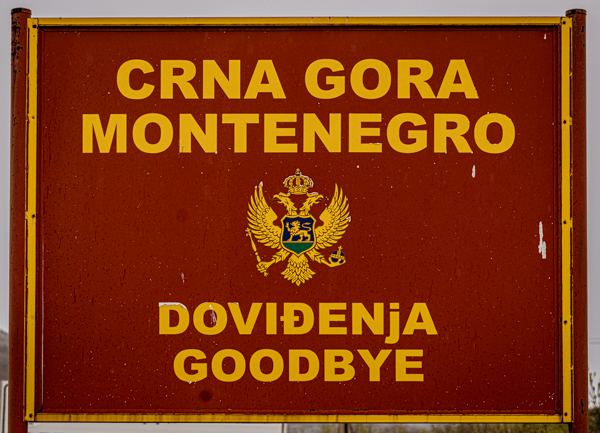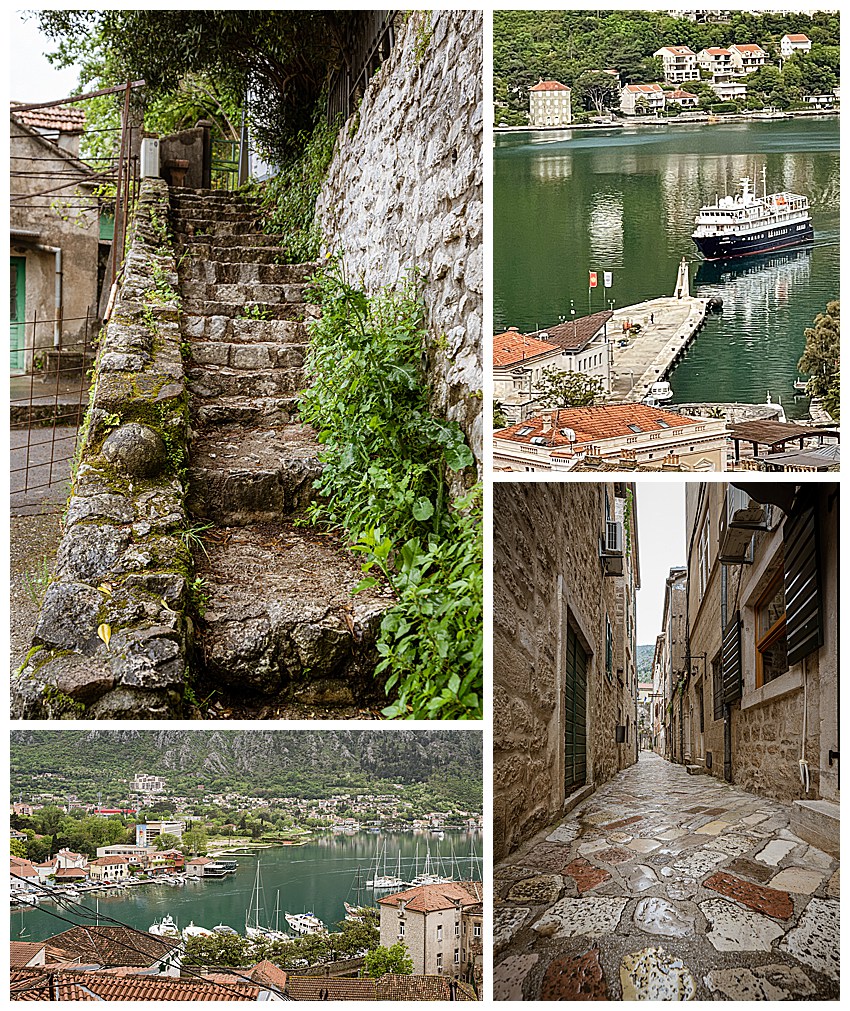
After leaving Bosnia, we traveled South and entered Montenegro, which means “Black Mountain.” This country is ringed by mountains that are… you guessed it, largely black. In recent history, this country was declared a kingdom in 1910, then merged into Yugoslavia after WWI. After the breakup of Yugoslavia, Montenegro combined with Serbia to form a federation. Finally, in 2006, Montenegro declared independence and became its own country. They are members of many international associations, and are in advanced stages of acceptance to join the EU.
After arriving in Kotor, a quaint city located right on the Adriatic Sea, we walked up a very steep hill, mostly on cobblestone steps (upper left), to the medieval St. John’s fort for most of an hour, to see an overview of the city and bay (upper right and lower left). There are 4 Unesco World Heritage sites in Montenegro, which is a coastal city that is a summer home for many (including former President Tito) and where real estate prices are escalating. Cruise ships regularly stop over, as well as many sailing ships.
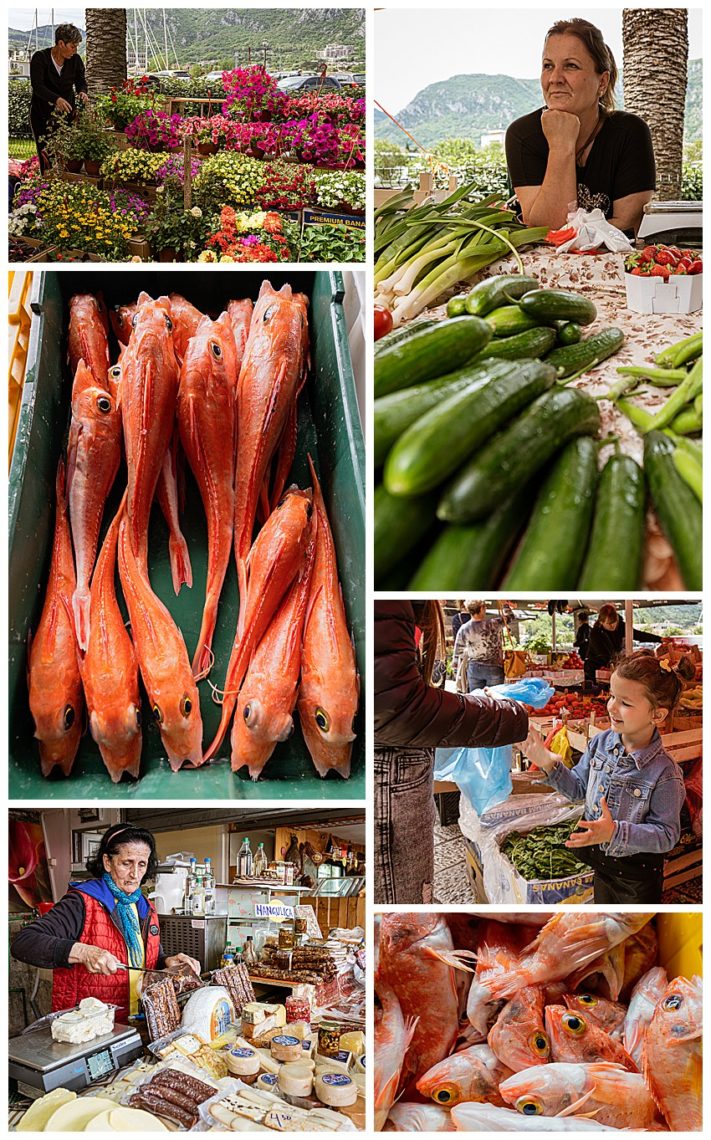
We often enjoy market scenes, so a visit to the local market just outside the city walls was an enjoyable way to spend a couple hours.
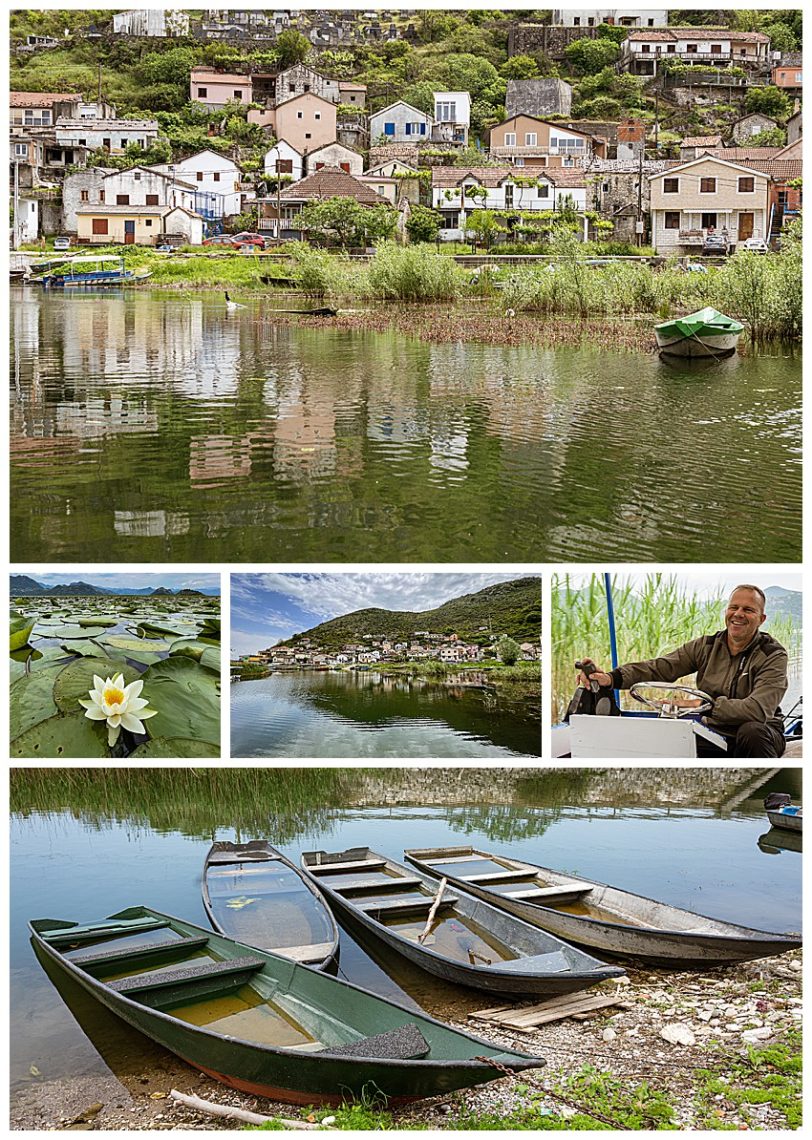
We visited a lake for some water reflection shots of the local town. As it happened, the water level was such that we really had to be on a boat to get the reflection shot Mehmet envisioned. The visible boats were mostly rowboats that were flooded and not exactly ready to carry photographers (bottom).
Never to let a small thing like that interfere, Mehmet went into gear and hired a boat to take us out. Our boat captain was related to one he hired years earlier (middle right), and steered us carefully out to the middle of the lake, so as to not disturb the calm water that created the reflection of the village (upper and middle).
Our boat captain took us through a tunnel and through a mangrove forest, to an area of open water with hundreds of water lilies (upper left), where we were able to practice shots using foregrounds and backgrounds.
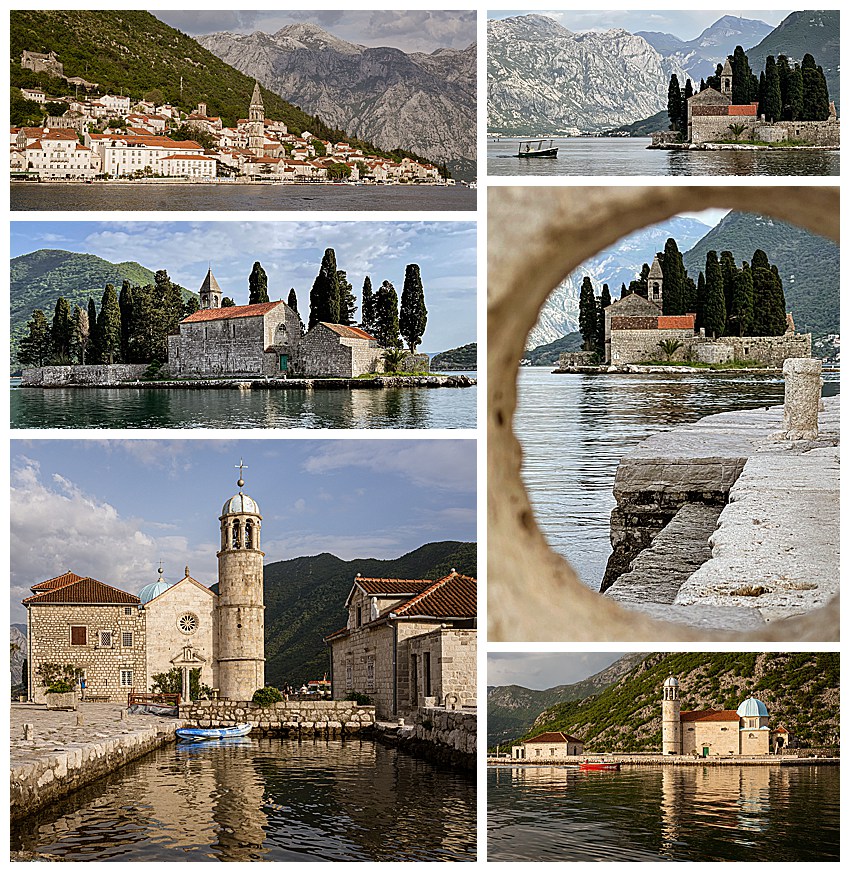
The next destination is Kotor, a medieval town with Venetian and Austro-Hungarian palaces and fortifications, which is located on the picturesque Adriatic Sea. Kotor has been classified as a UNESCO world heritage site since 1979 with its red roofs, narrow cobblestone streets, walled city, spires, domes and architecture. The highlight of the excursion was chartering a boat to photograph the church islands at the small fishing village of Perast at sunset, then a fish dinner watching the sun set on shore. the Medieval Old Town, Kotor, is known as the most beautiful town on Montenegro coast.
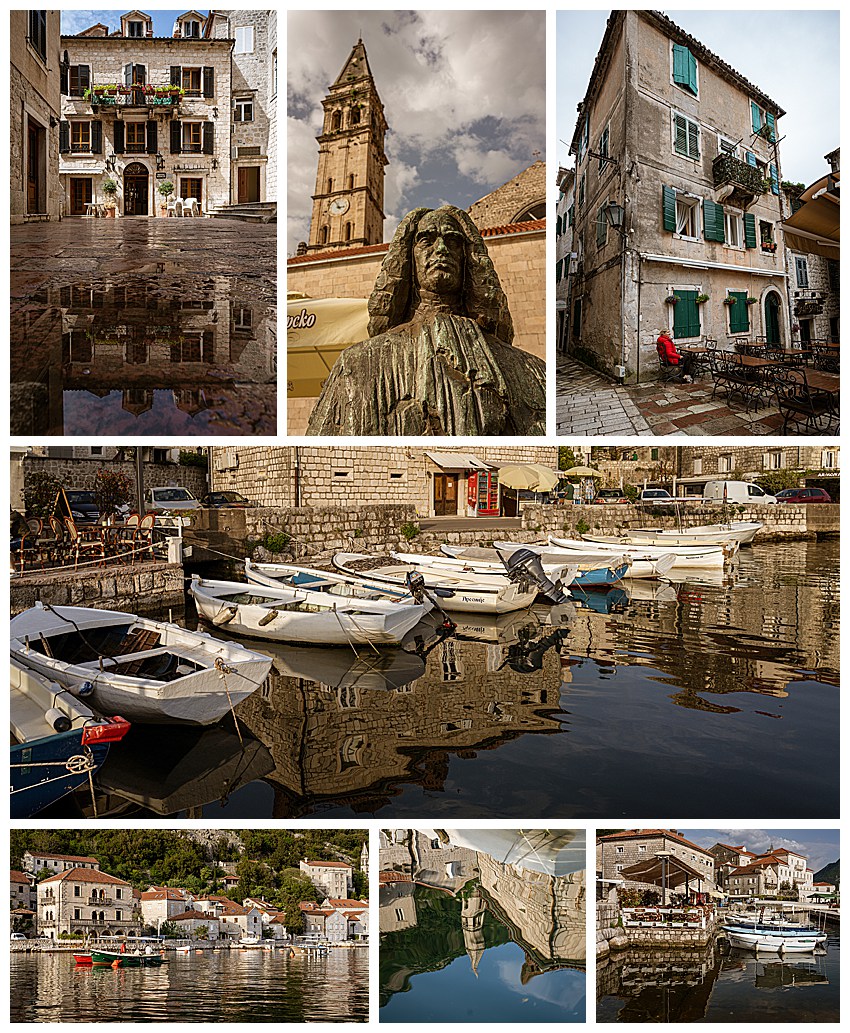
The Bay of Kotor is a playground for boaters. It has become a favorite of the cruise ships, so our guide carefully started our walking tours before the tour boats got into town and scheduled outings on the water and dinners after the crowds disperse. When the water is calm, reflections can be found everywhere you look.
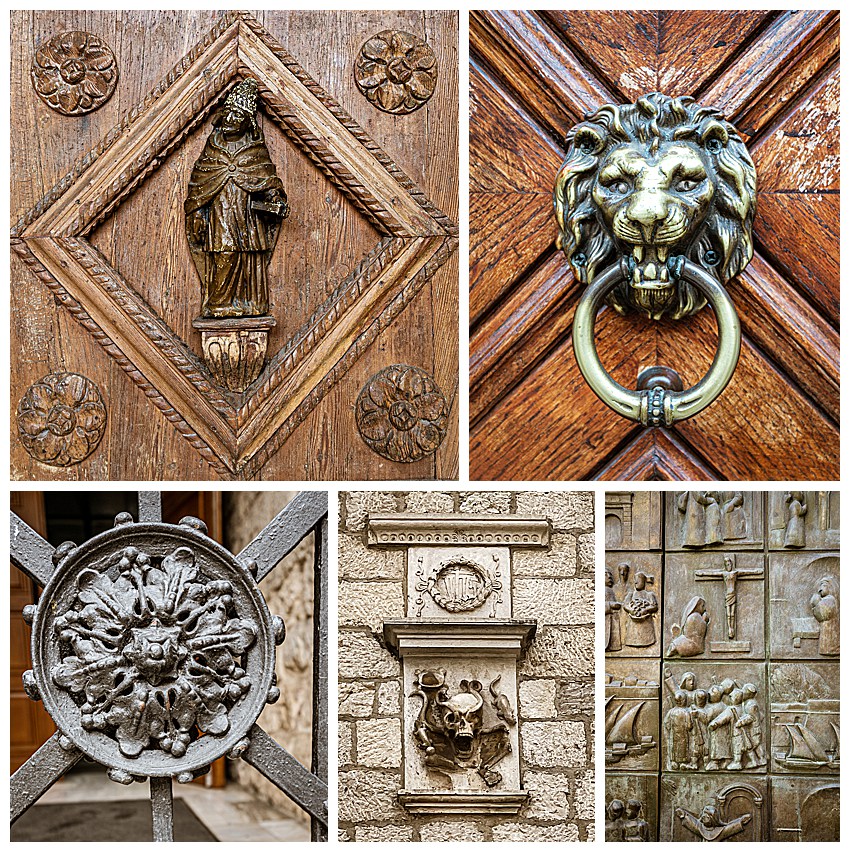
There are at least 6 historical churches worth exploring and the city is lined with architectural details. It has less than 25,000 residents.
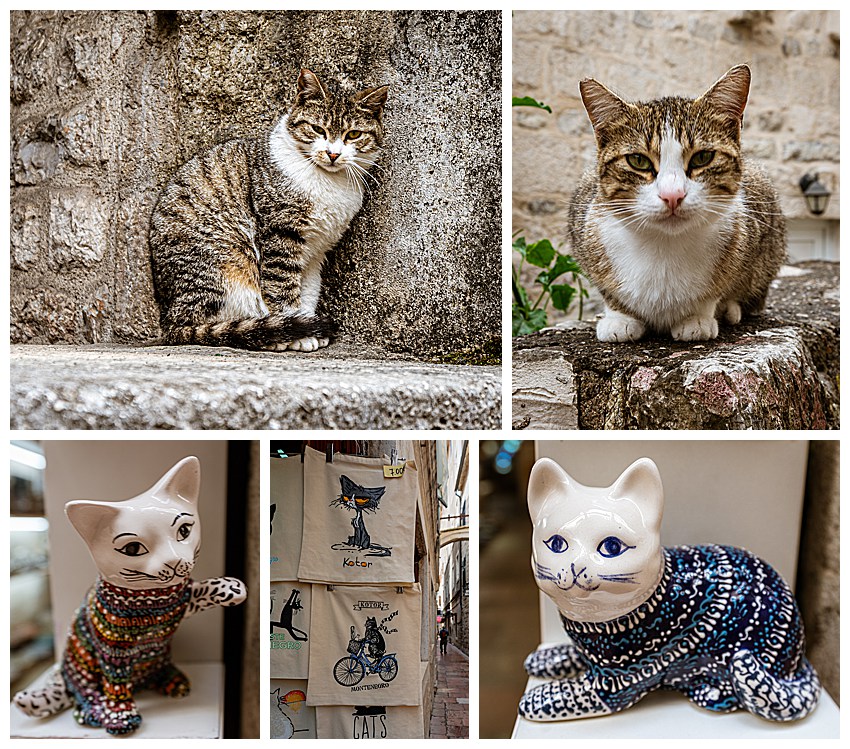
While exploring around the Old Town it didn’t take long to notice that Kotor has an unusually high population of cats. They seemed to be everywhere, including having its own Cat Museum! There is a story that because Kotor is a town between sea and mountains, there were lots of mice and rats and snakes, and it was necessary to have the cats in the town to protect it. So cats have become a symbol of good luck for Montenegro, at least according to the souvenir shop owner. You can find ceramic cats, souvenirs, t-shirts, jewelry, as well as live cats in almost every home. The official symbol of Montenegro is the Venetian lion, but the cat appears to be is the unofficial symbol of Kotor.
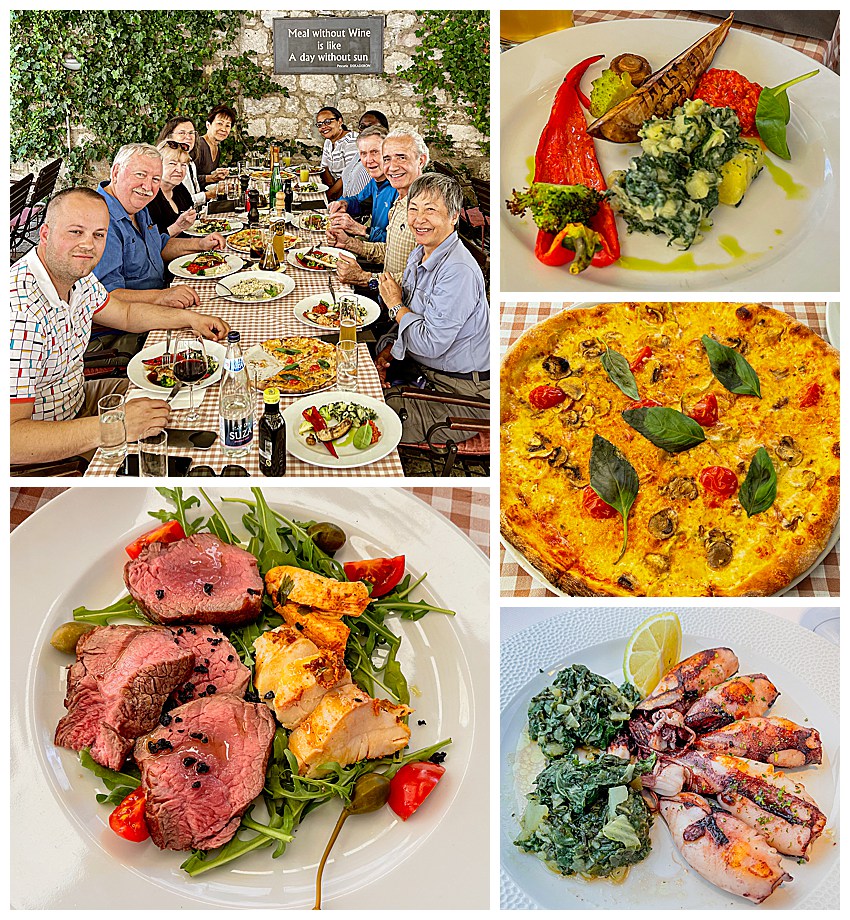
Great food and outdoor dining can be found everywhere. As always, Mehmet introduced us to the tastiest restaurants.
